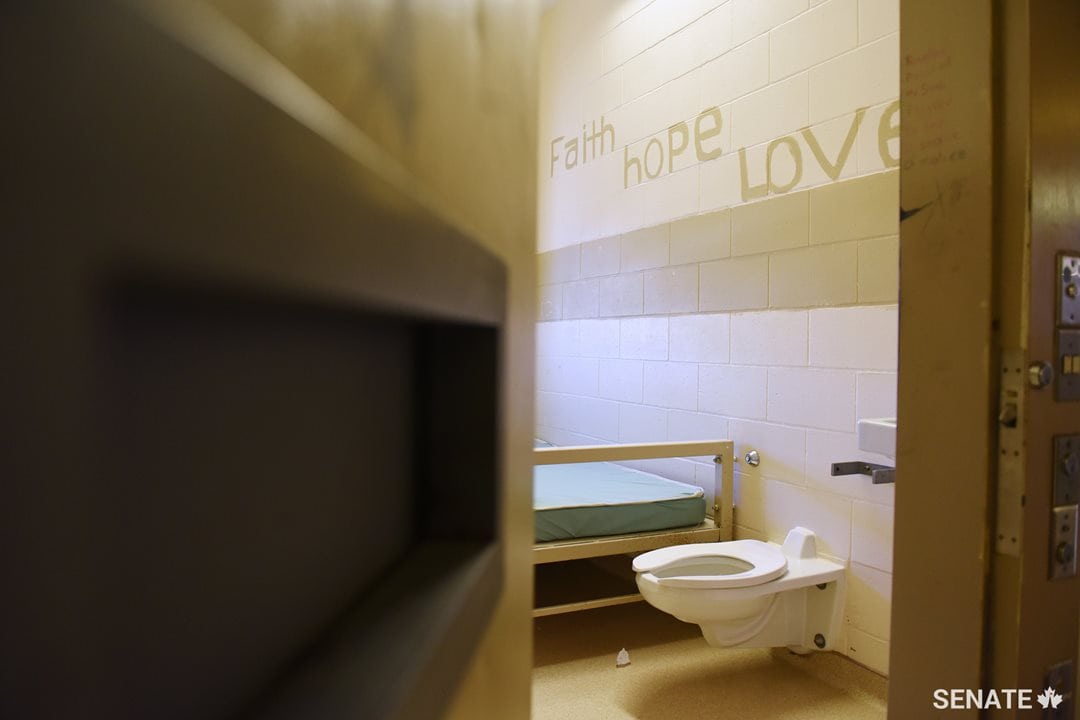
KJIPUKTUK (Halifax) – Today, February 15, is a relatively new statutory holiday, called Family Day in half of the provinces and Heritage Day in Nova Scotia, although of course here too those of us who can do so are home with our families.
For the most part, the people in prison in Canada have now gone 11 months without a visit from family. Visits in most federal prisons are currently banned. The organization I volunteer with has not been inside a correctional facility to facilitate programming since March 2020.
Those entering prisons experience two-week long isolations (basically solitary confinement), without any of the communication tools we use on the outside to cope. The new normal in prisons, which were already unbearable in cruelty, has become total separation from support networks.
Despite a small pilot to vaccinate 600 older federal prisoners, prisons remain extremely dangerous sites for COVID-19 transmission, with over 5,800 cases in correctional facilities so far. The risk is unlikely to ever disappear — prisons were never safe to begin with. This day with family is a day to join advocates across the country to call for prison abolition as a necessary strategy for public safety.
The many risks of prisons in the COVID-19 era are well documented: poorly maintained and unclean; with a lack of PPE, and a population with complex needs, stemming from lives of surviving abuse, poverty, and social exclusion, prisons are rife with infectious disease.
But it is this issue of social support that is the ultimate paradox: prisons cannot safely let visitors in, and people inside will never be safe without visits.
Pre-COVID-19, we had evidence that women in prisons were much less likely to be visited than men. Women make up between 7-16% of the incarcerated population, lower in the federal system and higher in the provincial system. The six federal prisons designated for women are so spread out across the country it could take a day of travel to get there, particularly for family members coming from the north or remote Indigenous communities, and 42% of incarcerated women are Indigenous.
With women as the fastest growing population in federal prison, sometimes prisons are so overcrowded the family visiting houses are used to contain prisoners, making visits impossible.
Even if such travel were directly and indirectly affordable, which it is not, and space was available, family members then face inter-provincial COVID-19 self-isolation periods and institutional restrictions. With few exceptions, visits are not allowed, and where they are (as of today, Nova Scotia’s federal prisons currently allow them, given our low active case count), the rules could change at a moment’s notice — even when you are midway there.
COVID-19 in prisons is a terrifying horror, and has several times become a death sentence in our country without the death penalty. But without visits, prisoners, especially incarcerated women, are at risk of many harms. In 2012, when last studied, there were 901 recorded instances of self-harm among 264 prisoners. Seventeen people accounted for 40% of the self-harm incidents, and of those 17, nine were Indigenous and nine were women. When the Office of the Correctional Investigator examined the experience of eight of the women at highest risk, it found:
“Most of these women had no history of any prison visits. For example, one woman had not had a visitor in 13 years and another has not had a visitor in 6 years. Two of the women had a few occasional visits — one woman had five visits over a six-year period and the other had one visitor over the course of 2011.”
Research in other jurisdictions have found an absence of visits to be associated with increased experience of depression, psychosis, and substance use among prisoners. Other researchers have found visitors experience prison as “quasi-prisoners,” given the pat-downs, searches, and other humiliations they are subjected to in order to see their kin, causing feelings of guilt and apprehension among those they come to visit.
The solution is not more prison visits, or better prison visit protocols, as such things are simply not possible during a pandemic or in a prison security regime. The solution is alternatives to imprisonment at all.
Here in Nova Scotia, leaders of the community organizations John Howard Society (J), Elizabeth Fry Society of Mainland Nova Scotia (E) and Coverdale Courtwork Society (C) launched the JEC program last spring in response to the danger COVID-19 posed to people in prisons. In a few short months JEC supported 55 people to secure independent housing. Despite the success of this initiative, and of Nova Scotia’s unparalleled success reducing incarceration by 41%, when funding for JEC ended last summer, so did the project.
Nova Scotia spends $255 per day to incarcerate each prisoner, higher than the provincial average across the country, but lower than what is spent daily in the federal system. Compare this to the $586 received each month by people on income assistance. Prison funding could be directed to housing, health services, and income support to prevent criminalization and prison harms. To reversing our abysmal child poverty rates and setting families up to thrive.
Prisons have not succeeded in containing COVID-19, in preventing outbreaks and death, despite the extreme sacrifice people inside have endured — near complete separation from support. It is time to stop pretending this expensive approach is viable and time to invest in community solutions like the very one grown here.
See also: Lives in prison: “Since Covid arrived it has only gotten worse”
Check out our new community calendar!
With a special thanks to our generous donors who make publication of the Nova Scotia Advocate possible.
Subscribe to the Nova Scotia Advocate weekly digest and never miss an article again. It’s free!



